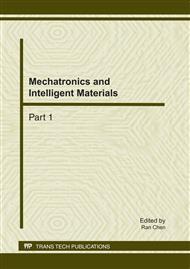p.535
p.540
p.545
p.550
p.555
p.561
p.565
p.571
p.576
Numerical Simulation of Stress Field of PRMMC Caused by Current Impulse
Abstract:
In this paper, based on the finite element analysis platform ANSYS, the stress field of particle reinforced metal matrix composites (PRMMC) caused by current impulse has been simulated. The cube cell model and multi-particle random distribution cell model are used in this simulation. The current field, temperature field and stress field of PRMMC caused by current impulse are given. The influence of material character of PRMMC, number or volume fraction of the particles in cell model, particles shape and distance on those fields is analyzed.
Info:
Periodical:
Pages:
555-560
Citation:
Online since:
February 2011
Authors:
Keywords:
Price:
Сopyright:
© 2011 Trans Tech Publications Ltd. All Rights Reserved
Share:
Citation:


